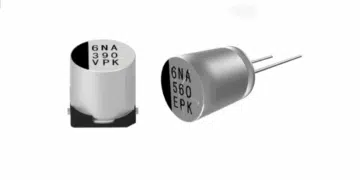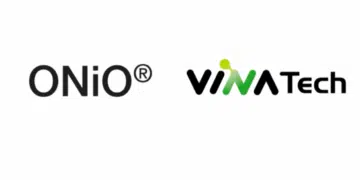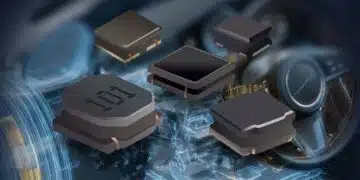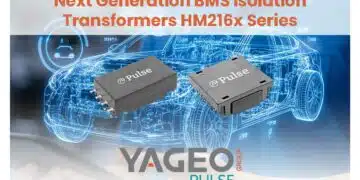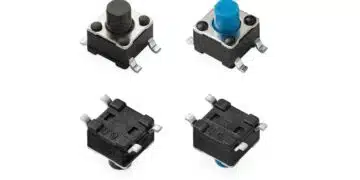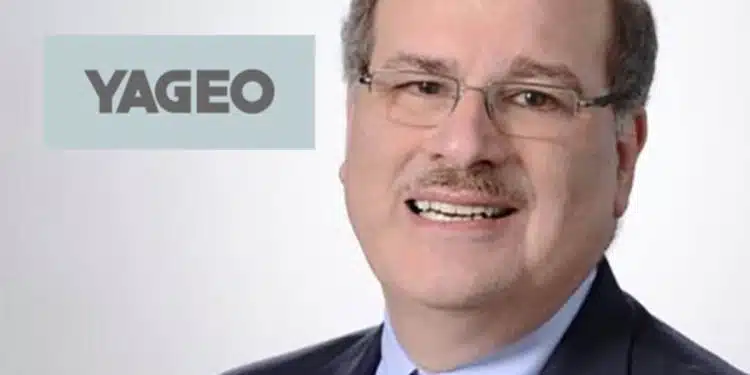In an interview for Markt&Technik Dr. Philip Lessner, CTO of Yageo Group discloses how Yageo is now striving for technology and market leadership in various areas.
Markt&Technik: Dr. Lessner, the Yageo Group currently employs around 40,000 people worldwide. How many of them work in research and development? How many R&D centers are there at Yageo worldwide?
Dr. Philip Lessner: We currently employ around 600 people in R&D worldwide. This figure does not include the engineers who take care of process optimization and automation. If you look at it closely, the 600 employees mentioned are 75 percent of the time busy with classic R&D tasks; the remaining 25 percent of the time they are mainly concerned with supporting ongoing production and quality.
Due to our acquisitions in recent years, these employees are spread across 20 R&D centers throughout the company. In December last year, we held a major R&D meeting in Taipei, where we discussed the long-term R&D strategy company-wide for the first time, while promoting a more intensive exchange between the various R&D centers.
Are the R&D centers focused on individual technologies, or is it possible, due to the acquisition history of the Yageo Group, that capacitors are researched and worked on in different R&D centers?
Of course, our history is reflected both in the number of our R&D centers and in the topics they work on. For example, the topic of capacitors is certainly being promoted in various R&D centers; the specialization, if you will, then takes place in focal points for different capacitor technologies. For example, for tantalum, MLCC, film or other types of capacitor electrochemicals.
The Yageo Group’s turnover in the last financial year was around 4.1 billion dollars. What is your annual R&D spending? Can you say something about R&D spending for 2023?
Our R&D expenditure has increased as a result of the various acquisitions. As a resistance specialist, Yageo’s R&D expenditure has long been in the region of 1 to 2 percent of sales. In contrast, companies such as Kemet or Pulse traditionally tend to spend R&D in the range of 2.5 percent or more. I would say that this is the level at which the Yageo Group’s R&D spending is hovering on average. As we move into new product areas and markets, it’s only natural that our R&D spending should reach nearly $100 million.
You generate almost half of your company’s revenue from four capacitor technologies. Is this also reflected in your R&D spending?
We are the technology and world market leader in the field of tantalum capacitors. Of course, this is also reflected in the corresponding R&D spending. The roadmaps for the development of our product technologies are created and organized by the respective business units. In the case of tantalum, this means that this year we will invest an additional 19 million dollars in the further development of this technology alone.
Specifically, the aim is to develop new tantalum powders for use in the high-voltage range and to improve environmental resistance for applications such as ADAS. At the same time, we are pushing ahead with the further development of our packaging platforms throughout the company. An example of this is the use of PCB lamination technology instead of traditional overmolding for the packaging of tantalum polymer capacitors. Of course, a not inconsiderable part of the money also flows into the expansion of our technological competence in the field of sensor technology.
When you look at the different areas where you are driving your R&D efforts, is there a product or technology segment where R&D efforts have increased disproportionately in recent years?
I would say that a lot has happened in the field of magnetic products, which represent the largest product group within Yageo, in recent years! One of the most outstanding products from our point of view is the material Nanomet. It combines the high saturation currents of metal cores with the low power dissipation of ferrite cores. We already use this material in our single-turn TPI inductor series for high-performance applications such as AI servers. We are also making progress in controlling electromagnetic interference. Two markets in particular are driving development in this direction: electromobility and the 5G market. In the 5G market, our flex suppressor material can be used to reduce electromagnetic interference between components. Kemet has already done this with the EFS series.
They generate 29 percent of their sales in the Americas, 26 percent in Europe and 45 percent in Asia. In Europe, there are always fears that in the course of miniaturization, fewer and fewer large components will be available for industrial electronics in the future. Are there any reasons to share these fears?
From our point of view, certainly not! Our past is closely linked to the topic of industrial electronics. The Yageo Group has expanded its automotive business with the acquisition of Kemet. We are currently building a new factory in Taiwan for the production of MLCC components for the automotive industry, but the corresponding components may also come from our MLCC plant in Mexico. On this point, I can assure you that when it comes to passive components, including for industrial electronics, we mean sizes of 0603 and much larger. This is a product area from which we will certainly not withdraw in the future.
They only make about 6 percent of their sales in consumer electronics. Is that another reason why you don’t go downsizing?
This decline in our share of the consumer business is due to the acquisitions made in recent years. In the past, Yageo’s presence in consumer electronics was much more pronounced. Against the background of these shifts, however, it makes little sense from our point of view to compete with the three or four major Japanese and Korean competitors in the miniaturization of MLCCs or other components. It would make no sense to compete with companies that partly specialize in components for these markets.
As the Yageo Group, we have enough products and technologies in which we can further expand and secure our market and technology leadership in the future through appropriate efforts.
You recently spoke about a CNF-MIM capacitor that you want to develop and launch together with the Swedish startup Smoltek Semi. What exactly are the advantages of this new capacitor technology?
In the past, there have been few passive device activities that have used semiconductor process technology to produce passive devices. Ipedia is probably the best known. Our goal is also to map the functions of passive components in semiconductors. In collaboration with Smoltek Semi, we build carbon nanofibers on 8-inch silicon wafers, with the rest of the processing done as part of a normal CMOS process technology. Such a wafer would then probably provide us with 48,000 CNF-MIM capacitors of size 0402.
We are currently at the stage of manufacturing technical samples in Finland at VTT. We plan to launch the first products from 2025. Our goal would then be 5000 wafers per month. These wafers would then be manufactured in Finland at VTT.
What capacities can you offer with these CNF-MIM capacitors?
At the moment, we assume that this technology is suitable for the capacitance range from 470 nF to several μF. The great advantage of such a carbon nanofiber metal insulator metal capacitor is that it can be manufactured with a thickness of less than 100 μm, so that it can be mounted on the PCB using SMD technology under processors or microcontrollers. We see possible applications not only in the field of wearables, but also in medical technology and in the automotive sector. Of course, it would also be possible to attach the required capacitors directly to the chip using CMOS technology. But this is currently still a future field that needs to be explored.
Do you assume that semiconductor technology will increasingly find its way into the production of passive components in the future?
In the long term, perhaps. Certainly not in the short and medium term, as such activities would involve enormous investments. So I don’t expect these activities to go beyond a niche segment in the next decade, but if it’s technically feasible and affordable, we’ll see more developments like this in the future.
If you look at the various developments in the field of passive components, where do you see the most interesting trends, where do you see the greatest development potential for the future?
There are currently many developments in the field of dielectric materials for film capacitors. We see materials for which operating temperatures of up to +135°C are no longer a problem. And not only that, there are material developments that have the +150 °C limit in their sights. Just think of the use of wide bandgap materials such as SiC, you need such materials, otherwise the use of SiC in interaction with the other components on the PCB makes little sense!
Nexensos has recently become part of the Yageo Group. In doing so, they are expanding their footprint in the sensor sector. Could Yageo also enter the MEMS space in the future?
We have expanded our product portfolio in the sensor sector through this acquisition. So far, the majority of our sensor products come from the Tokin portfolio. High-precision temperature measurement using platinum temperature sensors has not been part of our product range until now. Step by step, a group of companies is being created that will account for a sales volume of 600 million dollars after completion of all announced acquisitions. Whether we want to enter the MEMS market in the future, I can’t say at the moment.
You generate almost a quarter of your company’s sales in the automotive sector. How much does the transition to electric vehicles affect you, how much do you benefit from it?
We respond to this by developing special solutions. For example, we recently launched the smallest and most compact supercapacitor for use in the automotive sector. But the topic of film capacitors is also facing completely new challenges and opportunities with the global e-mobility boom!
Read the original Markt&Technik interview in German:


